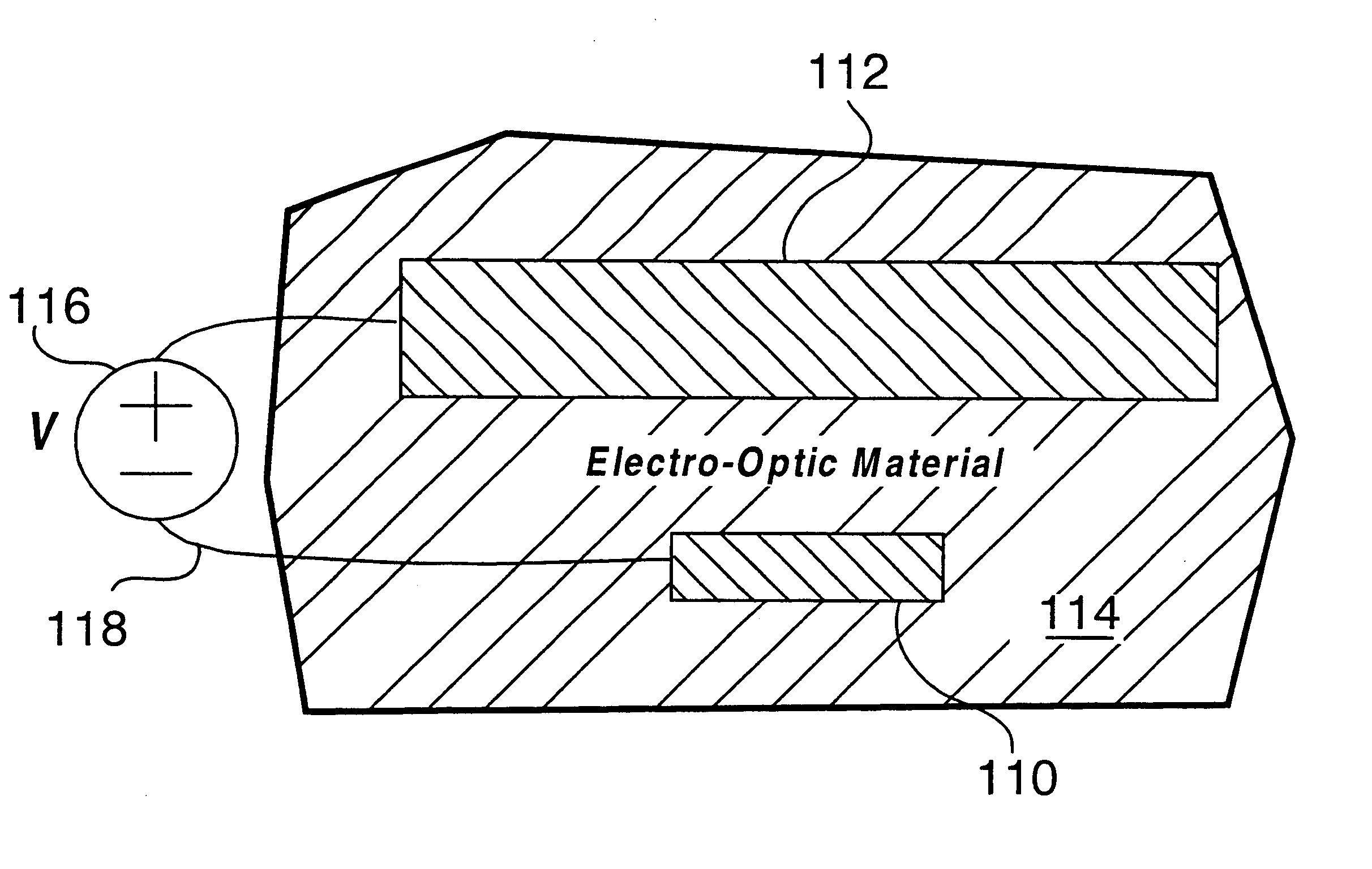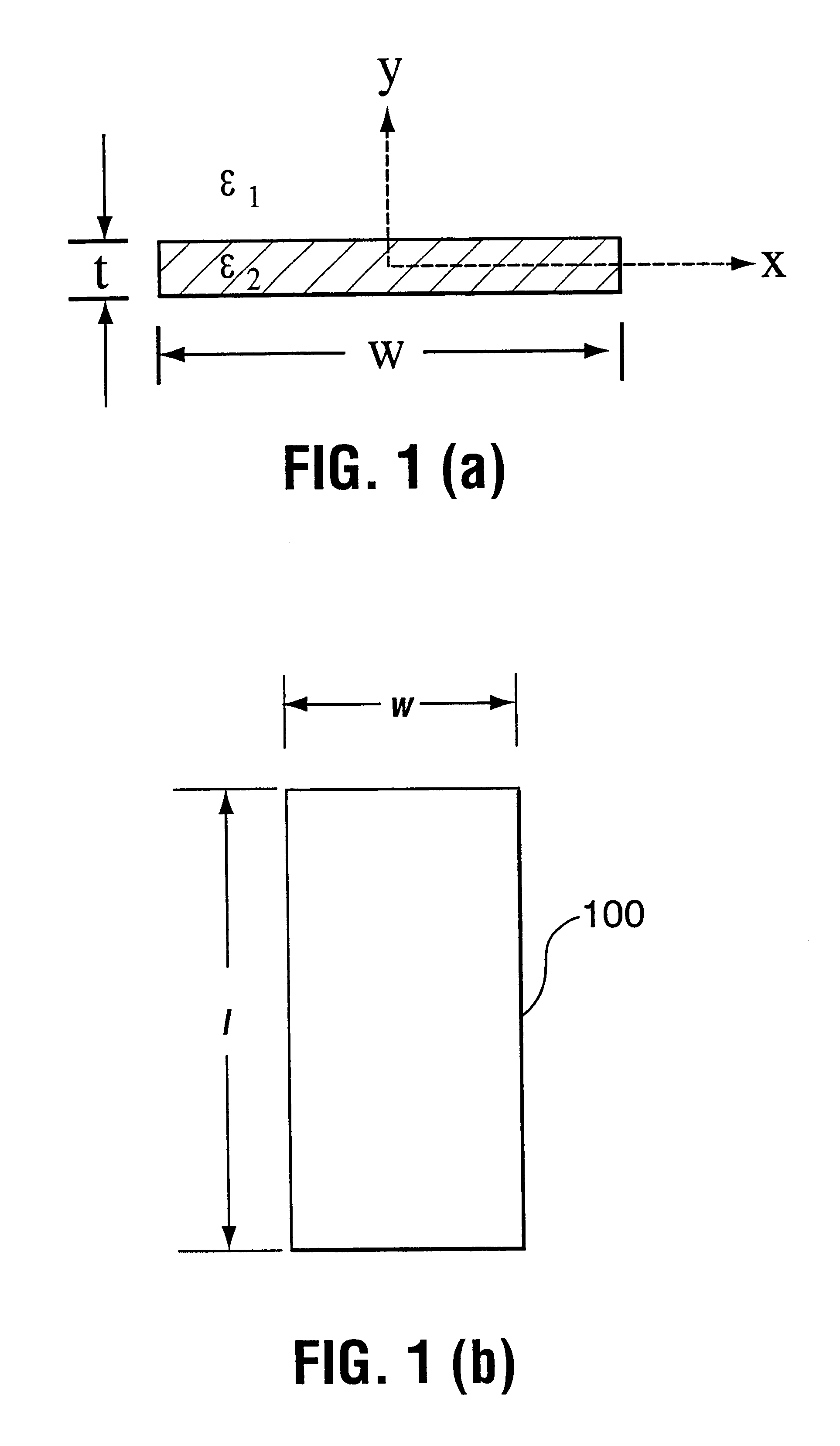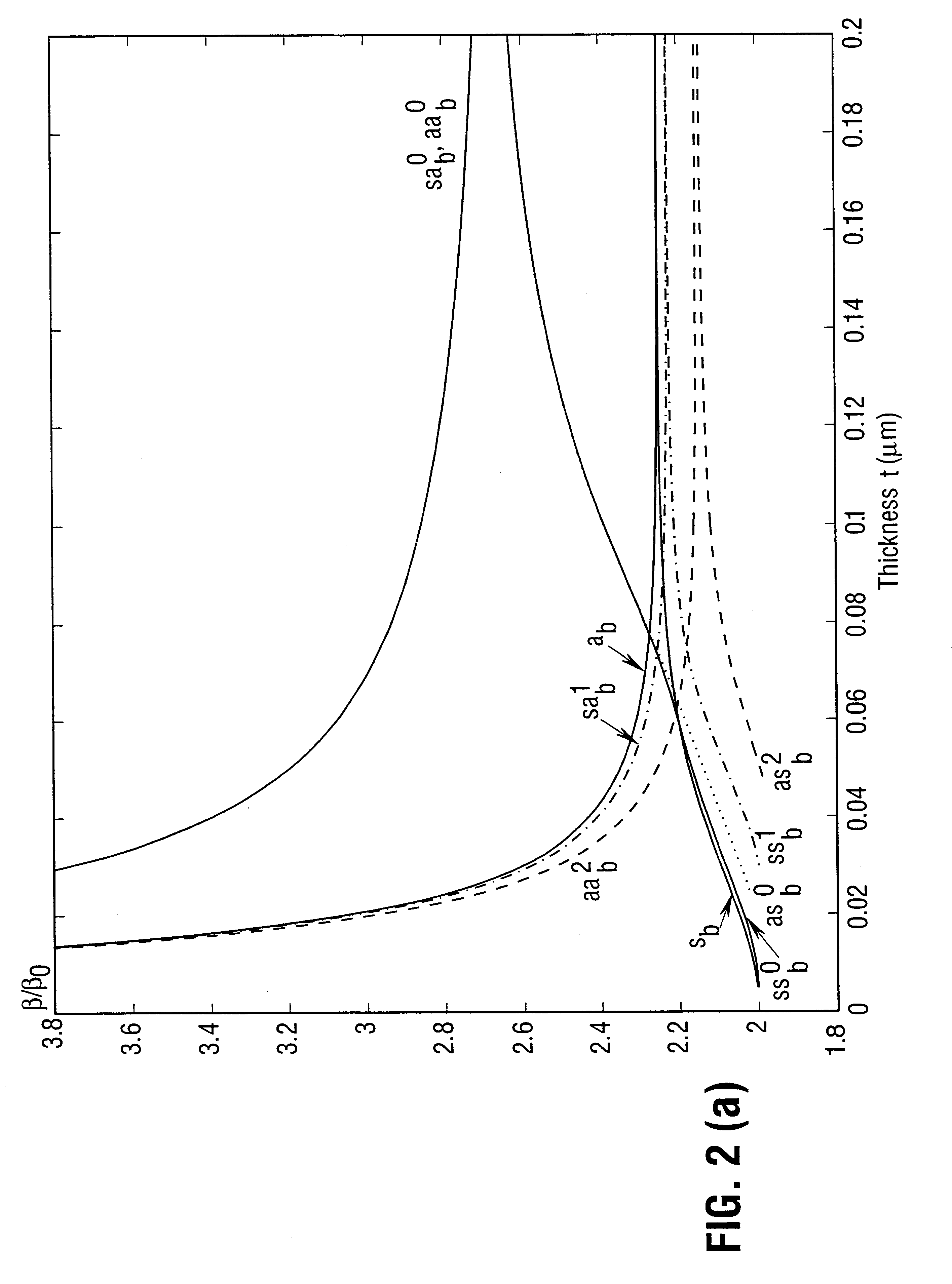Optical waveguide structures
a waveguide and optical technology, applied in the field of optical devices, can solve the problems of limited practical interest for lossy plasmon-polariton waves and lossy long-range surface plasmons guided by metal-dielectric interfaces
- Summary
- Abstract
- Description
- Claims
- Application Information
AI Technical Summary
Benefits of technology
Problems solved by technology
Method used
Image
Examples
Embodiment Construction
of Application
Examples of practical waveguide structures, and integrated optics devices which can be implemented using the invention, will now be described with reference also to FIGS. 27 to 42. Unless otherwise stated, where a waveguide structure is shown, it will have a general construction similar to that shown in FIGS. 1(a) and 1(b) or that shown in FIGS. 17(a) and 17(b).
The waveguide structure 100 shown in FIGS. 1(a) and 1(b) comprises a strip of finite thickness t and width w of a first material having a high free (or almost free) charge carrier density, surrounded by a second material which has a very low free carrier density. The strip material can be a metal or a highly doped semiconductor and the background material can be a dielectric.
Suitable materials for the strip include (but are not limited to) gold, silver, copper, aluminium and highly n- or p-doped GaAs, InP or Si, while suitable materials for the surrounding material include (but are not limited to) glass, quartz,...
PUM
| Property | Measurement | Unit |
|---|---|---|
| width | aaaaa | aaaaa |
| free-space wavelength | aaaaa | aaaaa |
| thick | aaaaa | aaaaa |
Abstract
Description
Claims
Application Information
 Login to View More
Login to View More - R&D
- Intellectual Property
- Life Sciences
- Materials
- Tech Scout
- Unparalleled Data Quality
- Higher Quality Content
- 60% Fewer Hallucinations
Browse by: Latest US Patents, China's latest patents, Technical Efficacy Thesaurus, Application Domain, Technology Topic, Popular Technical Reports.
© 2025 PatSnap. All rights reserved.Legal|Privacy policy|Modern Slavery Act Transparency Statement|Sitemap|About US| Contact US: help@patsnap.com



